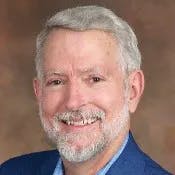Tesoro's Historic Lecture Series 2024
The Historic Lecture Series dates and topics for 2025 will be announced early December 2024. Stay tuned...
Dinner Lecture Tickets: $80 for Non-Members, $70 for Tesoro Members (Enter the code MEMBER in the "Discount" field on the Payment Method screen of the checkout process to get your discount on individual tickets online).
You can also call Tesoro Cultural Center to purchase your tickets, 303-839-1671, or for more information.
Dinner Lectures are held at The Fort, 19192 Highway 8, Morrison, Colorado--in Southwest Denver "Red Rocks country".
Chris Enss - Mochi's War: The Tragedy of Sand Creek - October 6, 2024
Mochi survived the Sand Creek Massacre in 1864 and went on to avenge the murder of her husband and child. Mochi’s War, the book I'll be speaking about, explores the motives behind the Sand Creek incident and the repercussions of the massacre into the last part of the nineteenth Century from the perspective of a Cheyenne woman whose determination swept her into some of the most dramatic and heartbreaking moments in the conflicts that grew through the West in the aftermath of Sand Creek.
Saturday, October 5, 2024, 1:30 p.m.
Lecture at Good Recreation Center
8615 S. University Blvd.
Centennial, CO 80121
This program is free to the public; however, registration is required through South Suburban Parks & Recreation, or by calling 303-347-5999.
Sunday, October 6, 2024, 1:30 p.m.
Lecture at Buck Rec Center
2004 Powers Ave.
Littleton, CO 80120
This program is free to the public; however, registration is required through South Suburban Parks & Recreation, or by calling 303-347-5999.
Sunday, October 6, 2024: 6:00 p.m.
Dinner Lecture at The Fort
19192 Highway 8
Morrison, CO 80465
Dinner Lecture Menu - Buffalo six-ounce tenderloin, grilled to perfection, served with a teriyaki marinated grilled quail, side of Thomas Jefferson' green chili mac 'n' cheese and served with seasonal vegetables. Dessert - The Fort's famous chocolate rum Negrita in an edible chocolate tulip cup.

Elliott West - Continental Reckoning: The American West in the Age of Expansion - October 13, 2024
The American West and Modern America are historical twins, and like many twins, neither can be understood without the other. Dr. West’s talk will explore the ways the expansion of the 1840s and the tumultuous changes that followed it, as much as the other great event of those years, the Civil War, created a nation we would know in the 20th and 21st Centuries.
Saturday, October 12, 2024, 1:30 p.m.
Lecture at Goodson Recreation Center
6315 S. University Blvd.
Centennial, CO 80121
This program is free to the public; however, registration is required through South Suburban Parks & Recreation, or by calling 303-347-5999.
Sunday, October 13, 2024, 1:30 p.m.
Lecture at Lone Tree Hub
8827 Lone Tree Pkwy.
Lone Tree, CO 80124
This program is free to the public; however, registration is required through South Suburban Parks & Recreation, or by calling 303-347-5999.
Sunday, October 13, 2024, 6:00 p.m.
Dinner Lecture at The Fort
19192 Highway 8
Morrison, CO 80465
Dinner Lecture Menu - Jack Daniels Buffalo BB ribs dinner served with buttery mashed potatoes, and gravy, chef's seasonal vegetables and "Spotted Dog" bread pudding with caramel sauce for dessert.

Ron Hranac - The Night the Stars Fell - November 17, 2024
The Night The Stars Fell
Presenter: Mr. Ron Hranac
Former Denver Astronomical Society President, Ron Hranac, will discuss “What is a meteor?” His lecture comes at the same time as the early meteor shower appeared at Bent’s Fort during the Leonid meteor shower. Thousands of meteors blazed through the night and into the morning of November 12, 1833, as the entire world watched one of the most spectacular sights of human history. The event had a significant impact on the Plains Indians who believed this might signal the end of the world. After dinner, enjoy looking at the stars through 19th century and modern telescopes in the Fort’s Courtyard, courtesy of the Denver Astronomical Society.
After dinner, enjoy looking at stars in the night sky, and the planets Jupiter and Saturn, through telescopes in the Fort’s Courtyard, courtesy of the Denver Astronomical Society.
Sunday November 17, 2024, 6:00 p.m.
Dinner Lecture at The Fort
19192 Highway 8 Morrison, CO 80465
Dinner Menu - Buffalo six-ounce tenderloin aux poivre (green peppercorn sauce), Fort potatoes (red potatoes tossed in caramelized onion, Anasazi beans and corn), seasonal vegetables. Dessert - Bobby Chaim's creamy cheesecake drizzled with huckleberry preserves.

